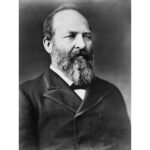In New York City on February 21, 1947, Edwin Land, an American scientist and inventor, demonstrated the first instant camera, the Polaroid Land Camera, to a meeting of the Optical Society of America. The camera, which he had been working on for many years, was the first to produce self-developing photographs in under a minute, eliminating the need for traditional film development.
Land’s invention relied on a new process called integral film, which combined both negative and positive sheets of film and a chemical pod that developed the image within the camera. The process used diffusion transfer to bring the dyes from the negative layer to the positive paper, resulting in a developed photograph. The instant gratification offered by the Polaroid camera revolutionized photography, making it accessible to anyone, regardless of their technical expertise.
The Polaroid Land Camera was an instant success, and the first model, the Model 95, was sold out on the first day of its release. The cameras were popular with both amateur and professional photographers, and Polaroid became a household name in the 1950s and 1960s.
Edwin Land went on to improve and innovate the Polaroid camera over the years, introducing new models and new technologies, including the popular SX-70 camera, which was introduced in 1972. The Polaroid instant camera remained popular throughout the 20th century, but the advent of digital photography in the 21st century made it less relevant, and the company eventually went bankrupt in 2001. However, the instant camera has recently seen a resurgence in popularity among a new generation of photographers, and the Polaroid brand has been revived.
References:
https://www.righto.com/2022/02/a-look-inside-chips-that-powered.html




